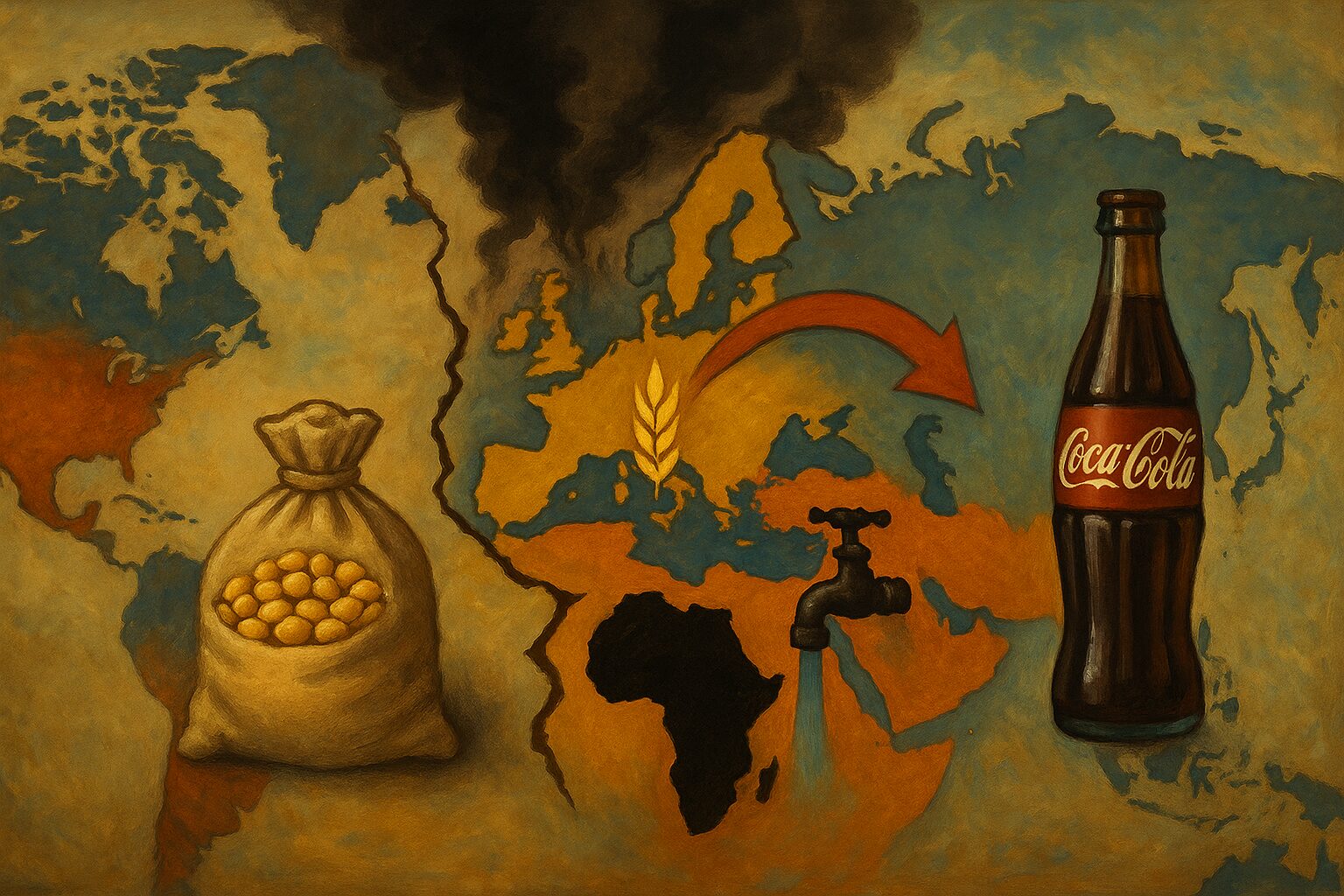A bottle of cola from Atlanta, wheat from Ukraine, and soybeans from Brazil—your average grocery basket is more global than you think. But what happens when the geopolitical puzzle behind food supply breaks apart? From war-disrupted wheat exports to climate-stressed trade routes, the global food system is increasingly fragile. Meanwhile, untapped potential on the African continent raises a compelling what-if: what if Africa had the water systems and infrastructure to feed itself?
This article explores the ripple effects of geopolitical shifts on food availability and price—and examines a future where Africa plays a bigger role in feeding its own people and perhaps the world. From real-world examples like Ghana’s irrigation turnaround to the consequences of the Ukraine war, we trace how power, policy, and pipelines shape what ends up on your plate.
Trend Snapshot / Factbox
| Aspect | Details |
|---|---|
| Trend Name | Geopolitics and Food Security |
| Definition | The influence of political power and international relations on global food supply chains |
| Key Components | Trade routes, water infrastructure, regional conflicts, agricultural self-sufficiency |
| Current Distribution | Global; acute in conflict regions (Ukraine, Middle East) and emerging economies (Africa) |
| Notable Examples | Black Sea Grain Deal collapse, Panama Canal drought, Ghana’s irrigation revamp |
| Social Media | #FoodSecurity, #Geopolitics, #AfricanAgriculture |
| Target Groups | Policymakers, NGOs, food importers/exporters, consumers in volatile regions |
| Wow Factor | A continent-scale shift in food independence could realign global food markets |
| Trend Phase | Early transformation stage |
The Wheat War: How Ukraine Changed the Price of Bread
When Russia invaded Ukraine in early 2022, one of the most underappreciated consequences was a massive disruption in the global grain trade. Together, Ukraine and Russia supply nearly 30% of the world’s wheat and more than half of all sunflower oil. The war immediately halted exports and sent global prices soaring. Food-insecure nations in Africa and the Middle East were hit hardest, exposing how tightly our diets are tied to geopolitics (Wikipedia).
The Black Sea Grain Initiative, a temporary diplomatic fix, allowed Ukrainian grain to reach global markets for a time. But with the deal now lapsed, volatility has returned. The result: food as a foreign policy instrument and growing awareness of agricultural dependence.
Bottlenecks and Chokepoints: Where Food Gets Stuck
It’s not just war that disrupts the food system. Trade routes are increasingly vulnerable to political and environmental stress. The Suez Canal, long a global shipping artery, has seen a 40% drop in cargo traffic due to regional instability. Meanwhile, a drought-hit Panama Canal is operating at reduced capacity due to low water levels (Le Monde).
Longer shipping times and costlier logistics mean higher food prices at the consumer level. From supermarket shelves in Europe to food markets in Asia, the effects are global. As climate change accelerates, these chokepoints will only become more critical.
Africa’s Hidden Potential: Food Sovereignty on the Horizon
Africa is home to 60% of the world’s uncultivated arable land, yet it remains a net food importer. The challenge isn’t land—it’s infrastructure, particularly water systems. Most African agriculture is rain-fed and vulnerable to drought. The WEF Nexus Index (Water-Energy-Food) ranks many African countries low on interlinked resource resilience, largely due to insufficient investment in irrigation and electricity (Nature).
But there are signs of change. Countries like Ghana are investing in irrigation networks like the Kpong Dam project under the West Africa Food System Resilience Programme (FSRP). Funded in part by the World Bank, the project aims to enhance self-sufficiency and reduce dependence on volatile imports. As more countries follow suit, the vision of an Africa that feeds itself becomes more plausible.
What If Africa Became a Net Food Exporter?
Let’s consider the counterfactual: a continent with reliable water access, modern agriculture, and efficient logistics. Such a shift would transform not only Africa’s internal dynamics but also global trade flows. Europe and parts of Asia, currently reliant on South American soy or Ukrainian wheat, might diversify toward African producers.
This wouldn’t just be about exports. Greater food security could stabilize regions plagued by hunger-related conflict and migration. It could also shift diplomatic power toward African nations, making them more equal players in global negotiations. While still hypothetical, the seeds are already being planted—in pilot irrigation projects, ag-tech hubs, and policy frameworks across the continent.
From Fragile to Resilient: Building a Better Global Food System
The takeaway? Global food security is not just about farming—it’s about politics, planning, and preparedness. Whether it’s a war in Eastern Europe or a dam project in West Africa, the future of food will be shaped as much by treaties and trade routes as by soil and seeds.
To build resilience, policymakers must think systemically. That means supporting infrastructure where it’s lacking, diversifying trade partnerships, and preparing for climate disruptions. It also means recognizing Africa not as a recipient of food aid but as a potential engine of agricultural innovation and sovereignty.
If you’re curious about food design and snack trends, check out our story on Fast Food Diplomacy – Why Politicians Eat Like the People.

